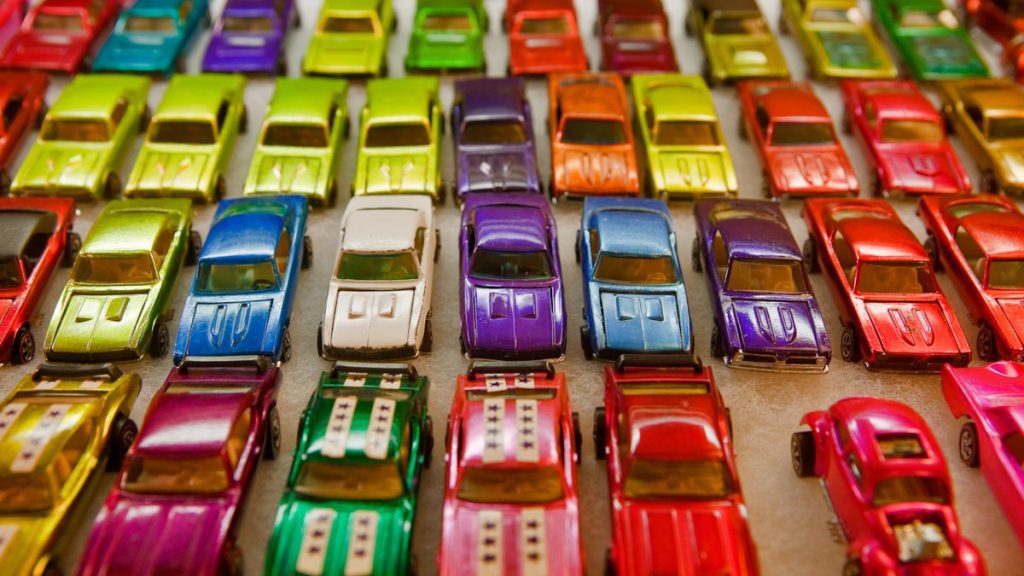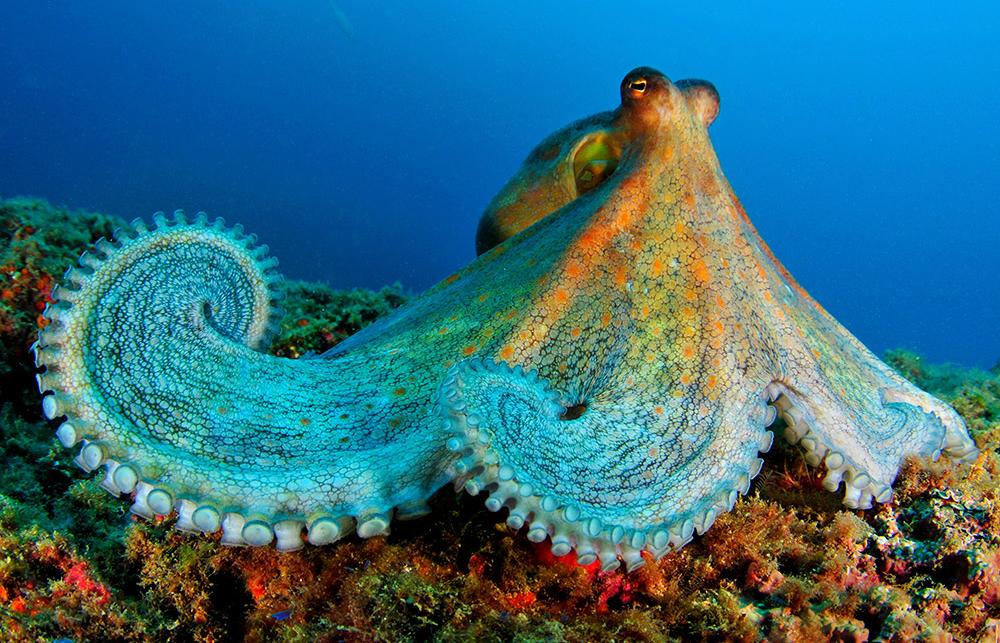Mattel makes nearly a billion dollars annually off of selling brand-new toy cars to children. However, adult collectors and dealers dominate the secondary market.
Bruce Pascal spends his days in Washington, D.C., as a successful commercial real estate executive who brokers deals worth millions of dollars.


He uses his spare time to make large eBay purchases of $5,000 Hot Wheels cars.
The 59-year-old man has the most valuable collection of Hot Wheels in the world, a staggering 7,000 rare toy cars insured for $1.5 million. Many were acquired from former Mattel employees and are prototypes, such as a 1969 pink rear-loading Beach Bomb that is estimated to be worth around $150,000.
For the past 50 years, Hot Wheels have been the most popular toy in the United States. The niche but powerful collectors’ market that exists in the digital underworld today is driven by the children of the 1960s.
Pascal is among a small group of extremely wealthy people who seek out and purchase extremely rare automobiles. This eclectic crew includes a former BMX stunt rider, a teacher of automotive repair, and a man who runs a goose-catching service.
How did toys that once cost 59 cents become valuable collectibles worth thousands of dollars? Why do grown men and women waste fortunes on their pursuits?
The rise of the Hot Wheels collecting craze
Mattel’s co-founders Ruth and Elliot Handler saw a niche for small-scale toy cars after the enormous success of their 1959 Barbie doll.
They then hired auto designers from General Motors, Chrysler, and Ford and gave them free rein to make one-off, eye-popping-hued hot rods. On May 18th, 1968, retailers began stocking the “Sweet 16” series of Hot Wheels for $0.59 apiece.
Mattel sold 16 million of them in that single year.
Some 41 million kids in the 1960s and 1970s enjoyed playing with Hot Wheels and racing their cars down the bright orange tracks.
A market for adult Hot Wheels collectors emerged as these kids grew up and had children of their own.
Mike Strauss, a food-truck salesman who became known as the “father of Hot Wheels collecting,” convened the first adult convention in the late 1980s. Soon after, there were newsletters, price guides, and Usenet trading groups.
Mattel took advantage of this emerging market segment by establishing a premium collectors’ club that quickly attracted 100,000 subscribers.
In 1995, the company also introduced the “Treasure Hunt” series, which consisted of limited-edition automobiles that were placed at random in retail outlets across the country. Within a short time, grown men were crashing through children at JCPenney stores and pounding each other with miniature versions of T-Birds, Camaros, and VW Bugs. If you’re aggressive enough, you can grab one for a few dollars, and then sell it on the collector’s market for $20 to $80.
The current market for collectors is thriving
Mattel’s Hot Wheels brand hit a new high in 2021, bringing in $1.07 billion in revenue. Every second, 16 vehicles leave the factory, and the company has sold over 6 billion vehicles in 20,000 different models since 1968.
According to Mattel, there are 15 million “avid collectors,” each with an average of 1,550 cars. Ninety percent or so of these collectors focus on more recent releases, also known as “mainlines.” Ten percent of the population, mostly older men, is interested in the lucrative “redline” cars made between 1968 and 1977.
Certain models of these automobiles, whether vintage or modern, can fetch several thousand dollars on eBay and similar auction sites:
- At a price of $31,000, one owner paid a tidy sum for a set of the first 16 redline cars.
- The price of a 1998 eight-car set was $20,000 USD.
- One 1968 Barracuda Bronze custom went for $15,000 in the market.
- A rare custom Camaro fetched $7,000 at auction.
- There were a total of 28 bidders, and the 1976 Z Whiz eventually went for $6,500.
“The right model can pay for your kid’s college tuition,” a dealer boasted to The Hustle. First, though, you’ll need to track down a collector who’s mad enough to pay top dollar for it.
The Hot Wheels Whales
His obsessiveness is on full display in Bruce Pascal’s home office in Potomac, Maryland.
The length of the room is lined with enormous orange “race track” beams that are 24 feet in height. Handmade tool chests can also be used to store collectible toys. One wall is covered in a giant mural of Hot Wheels cars, and others display some of his most prized toys.
Pascal’s entry into the hobby is typical of that of dedicated collectors: at the tender age of seven in 1968, he was captivated by Hot Wheels. As time passed, he relegated his cars to a cigar box in the attic, where they remained forgotten until he rediscovered them 30 years later.
Pascal went from zero to sixty in a heartbeat, overcome with emotion.
He studied the market by devouring price guides and placing ads in newspapers, offering to buy vintage Hot Wheels collections for 50-70% below their current value.
The real estate broker spent $70k on a pink 1969 Rear-Loading Beach Bomb, considered the “Holy Grail” of Hot Wheels, just six months into his collection, cementing his place in toy car lore and earning him instant fame. It was three times the previous record for a Hot Wheels car and paved the way for other deals involving five figures.
Pascal isn’t satisfied with the available automobiles on the market today.
He spends his time trying to track down former Mattel employees who might be willing to part with extremely rare unreleased prototypes. These automobiles cost him hundreds of thousands of dollars, which he has sometimes paid for with large wads of cash.
A lot of the time, sellers have no idea what they’re selling until Pascal tells them their collection of vintage toys is worth $25,000. Recently, when Pascal gave a vendor a check for $12k, the man burst into tears. The man’s roof was replaced with a collection of forgotten toys.
“I’m like the Antiques Roadshow that shows up at their door,” he explains.
Pascal’s collection is worth $1.5 million, making the annual premiums for insurance into the thousands.
In the opinion of Pascal, the most valuable of the Hot Wheels cars were the rear-loading Beach Bombs, which were canceled in 1969. To date, only 48 have been discovered, and they fetch prices between $20,000 and $50,000.
Also, in 1968, a small batch of “Over-Chrome” Hot Wheels was made, featuring an extra layer of chrome for an extra shine. The average price for a Mustang is between $20,000 and $30,000, but a strawberry red one once sold for $50,000.
An automobile’s estimated value is oftentimes highly subjective and based on the prices that a relatively small number of willing buyers are willing to pay.
He says that the condition, casting, and color of an item are often the deciding factors in its value. It’s impossible to count the number of different exterior colors, interior layouts, and wheel designs that can be found in the world of Hot Wheels. You need to be able to recognize the details.
Pascal has recently been thinking about death and the future of his Hot Wheels due to COVID-19. In an Excel spreadsheet, he has meticulously recorded his findings for the past six months.
“If I die without documenting everything, I’m screwed, because there might only be 10 people in the world who know the value of what I have.”
It’s not just Pascal who has an expensive hoard of model cars from his childhood.
The Canadian entrepreneur and chess master Sid Belzberg amassed a collection worth over $700.000, which included the very first production run of the Hot Wheels line of toys (a red Camaro). The food salesman Mike Strauss reportedly made between $800,000 and $1,000,000 in 2011 from the sale of 30,000 automobiles. One of the creators of Hot Wheels, Larry Wood, recently sold his legendary collection at auction for an estimated $600,000.
On the other hand, there are collectors who care more about quantity than quality.
Mike Zarnock, a teacher of automotive technology in Utica, New York, has the largest collection of unique Hot Wheels cars in the world, numbering more than 30,000 as of this writing.
Zarnock was driving a custom-built Chevrolet S10 when I called him this week. The toy cars, known as “Hot Wheels,” have been a lifelong passion of his, so much so that he broke up his first date with his future wife to go to a toy store and buy some.
After the birth of his son in the mid-1990s, he began a serious collection of toys. “Most of us older collectors are trying to buy our childhood back,” the 62-year-old says of his fellow collectors.
Zarnock has published 14 books on Hot Wheels and runs a YouTube channel where he discusses topics like the finer points of limited-edition SpongeBob SquarePants vehicles.
He has a wide range of Hot Wheels merchandise, from underwear to speakers to roller skates, in addition to the toy cars themselves (Beatnik Bandits, Silhouettes, AC Cobras, Corvettes, and so on). He most likely possesses anything bearing the aforementioned logo.
Although he refuses to give an exact figure, his collection is likely worth more than $750,000, according to his estimates.
“Even if I died tomorrow, I wouldn’t get anything back,” he says. In all likelihood, my better half would sell them at a garage sale for a quarter each.
Hot Wheels’ equivalent of Indiana Jones
Rare Hot Wheels are difficult to come by, so super collectors often rely on the scavenging of expert dealers like Bob Young.
Young is a multitalented man based just outside of Philadelphia. For many years, he oversaw medical assistant training programs while also starting a business revolving around the removal of geese using a pack of Border Collies. Even though he’s 60 and mostly retired, he still likes to take his Ferrari California out for a drive every now and then while keeping up with his website, Redline Archeology.
Essentially a Hot Wheels broker, Young spends his days scouring basements, attics, closets, garages, and storage units in search of rare, one-owner collections.
When asked to describe himself, he compares himself to Indiana Jones using the analogy of Hot Wheels.
In the mid-1990s, Young launched his career by placing ads in regional publications. When he was a high school athletic trainer just starting out, he found success in the secondary market for Hot Wheels and used the money he made to pay off his student loans and build a pool in his backyard.
Today, search engine optimization (SEO) is his primary source of new business.
After making contact with a potential seller, he will conduct an evaluation of the collection and make an offer of 50-70% below the asking price. Then, he’ll get in touch with his friend Woody Itson, a retired BMX stunt rider and Hot Wheels collector in Dallas, who buys his items in bulk for 75% of the market value and sells the cars individually.
Itson paid $32,500 for a collection from Young in a recent transaction. The money Young put in was doubled, and Itson made $9,000 in profit.
According to Young, serious collectors can be arrogant, demanding, and aggressive, so he avoids them.
He says, “Trusting people in the Hot Wheels universe is difficult.” People will slit your throat to steal these cars, and there are a lot of charlatans out there.
Young isn’t sure if the high prices that some collectors ask for their collections are fair.
He says that many buyers “pay way too much money,” only to be taken aback by the items’ actual market value. The price of Hot Wheels is like the price of stocks; it goes up and down all the time depending on what other people are willing to pay.
The hobby’s big spenders, however, will tell you that they aren’t in it for the money.
“My grandfather was one of the foremost automobile historians in the United States,” Pascal says. I’m positive that if he saw my collection, he’d crack a smile. The truth is that “I’m in it for the love of the cars.”




